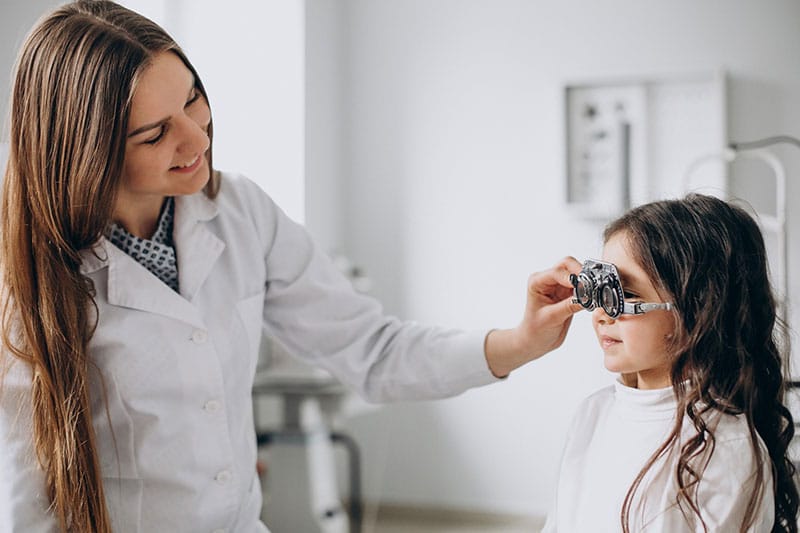Eye injuries are considered the leading cause of vision loss in children. As per reports, about 42,000 sports-related eye injuries occur every year in the United States, and children suffer most of these injuries. It is estimated that one in four children experience serious vision problems and if left untreated, these problems can significantly affect the child’s learning ability, self-esteem and social skills in schools. Performing regular and comprehensive eye examinations help in identifying any vision-related problems in its early stages so that appropriate treatment can be initiated to slow or prevent the progression of any eye problems in the long run. Ophthalmology medical billing and coding can be challenging. Ophthalmologists treating different types of eye injuries or related vision problems need to ensure that the medical billing and coding for the same is done appropriately on their medical claims. To code the diagnosis and treatments correctly, they can rely on reputable medical coding companies.
Some of the most common eye conditions that children experience include – color blindness, refractive errors (nearsightedness, farsightedness, and astigmatism), amblyopia (lazy eye), strabismus (crossed eyes) and Ptosis (drooping of the eyelid).
Guidelines for Comprehensive Pediatric Eye and Vision Examinations
The American Academy of Ophthalmology and the American Association for Pediatric Ophthalmology and Strabismus recommend the following schedule for comprehensive child vision screenings –
- Newborn – An ophthalmologist should do a comprehensive exam if the baby is – born prematurely, has signs of eye disease or a family history of childhood eye disease. New born vision screenings may include testing for identifying –
- A “red reflex” – like seeing red eyes in a flash photograph. If the bright light shone in each eye does not return a red reflex, more testing may be needed.
- Blink and pupil response
- 6 to 12 Months– A second screening should be done during the child’s first year of life – usually done at a well-child exam between 6 and 12 months. The child’s pediatrician or other health care professional should visually inspect the eyes and check for healthy eye alignment and movement.
- 12 to 36 Months – Between 12 and 36 months, a child is checked for healthy eye development. There may be a “photo screening” test – wherein a special camera captures images of the child’s eyes. These images help find problems that can lead to amblyopia (lazy eye). If any problem is detected, the child may be referred to an ophthalmologist.
- 3 to 5 Years – Between 3 and 5 years, a child’s vision and eye alignment should be checked. This may be done by a pediatrician, family doctor, ophthalmologist or an optometrist. Visual acuity should be tested as soon as the child is old enough to read an eye chart. If the screening shows signs of – misaligned eyes (strabismus), “lazy eye” (amblyopia), refractive errors (myopia, hyperopia, astigmatism) or another focusing problem – the child will be referred to an ophthalmologist.
- 5 Years and Older – At 5 years, children should be screened for visual acuity and alignment. Nearsightedness (myopia) is the most common problem in this age group which can be corrected with eyeglasses.
Pediatric Vision Screening Codes
When documenting pediatric or child vision conditions, it is important to include the exact causes, symptoms, diagnosis, screening tests and treatment procedures performed using the correct medical codes. Medical coding outsourcing services provided by a reputable billing company can help physicians use the correct codes for their billing purposes –
- Z01 Encounter for other special examination without complaint, suspected or reported diagnosis
- Z01.0 Encounter for examination of eyes and vision
- Z01.00 …… without abnormal findings
- Z01.01 …… with abnormal findings
- Z01.02 Encounter for examination of eyes and vision following failed vision screening
- Z01.020 …… without abnormal findings
- Z01.021 …… with abnormal findings
The above codes are reported for routine examination of eyes and vision only and not reported when a vision screen is done during a routine well-child exam.
CPT Codes for Vision Screening
- 99173 – Screening test for visual acuity, quantitative, bilateral
- 99174 – Instrument-based ocular screening (e.g., photoscreening, automatic refraction), bilateral, with remote analysis and report
- 99177 – With onsite analysis
August Is Observed as Children’s Eye Health and Safety Month
The month of August is observed as “Children’s Eye Health and Safety Month” in the United States. Sponsored by the American Academy of Ophthalmology (AAO), the month-long campaign aims to generate widespread awareness among the general public of the need to save children’s eyesight, and to prevent eye injuries and vision loss. The eye health needs of children are quite different from those of adults. Therefore, early diagnosis and treatment is critical to preserve a child’s eye health. The 2021 campaign is a timely reminder to prepare children for the classroom and athletics and make them wear the required protective gear for their classes and athletic activities, too. It encourages parents to take their children for an eye examination as part of their back to school check list.




